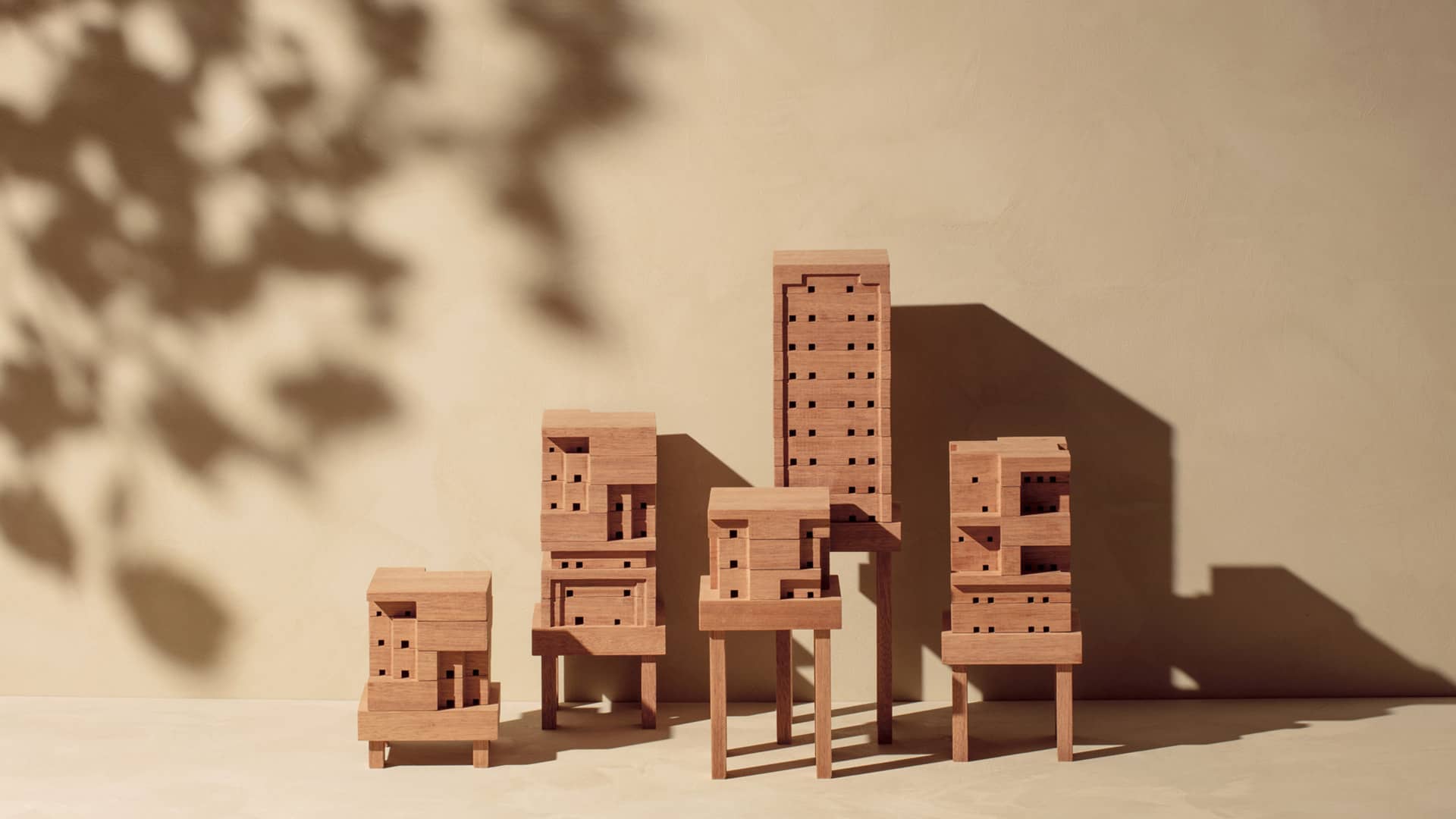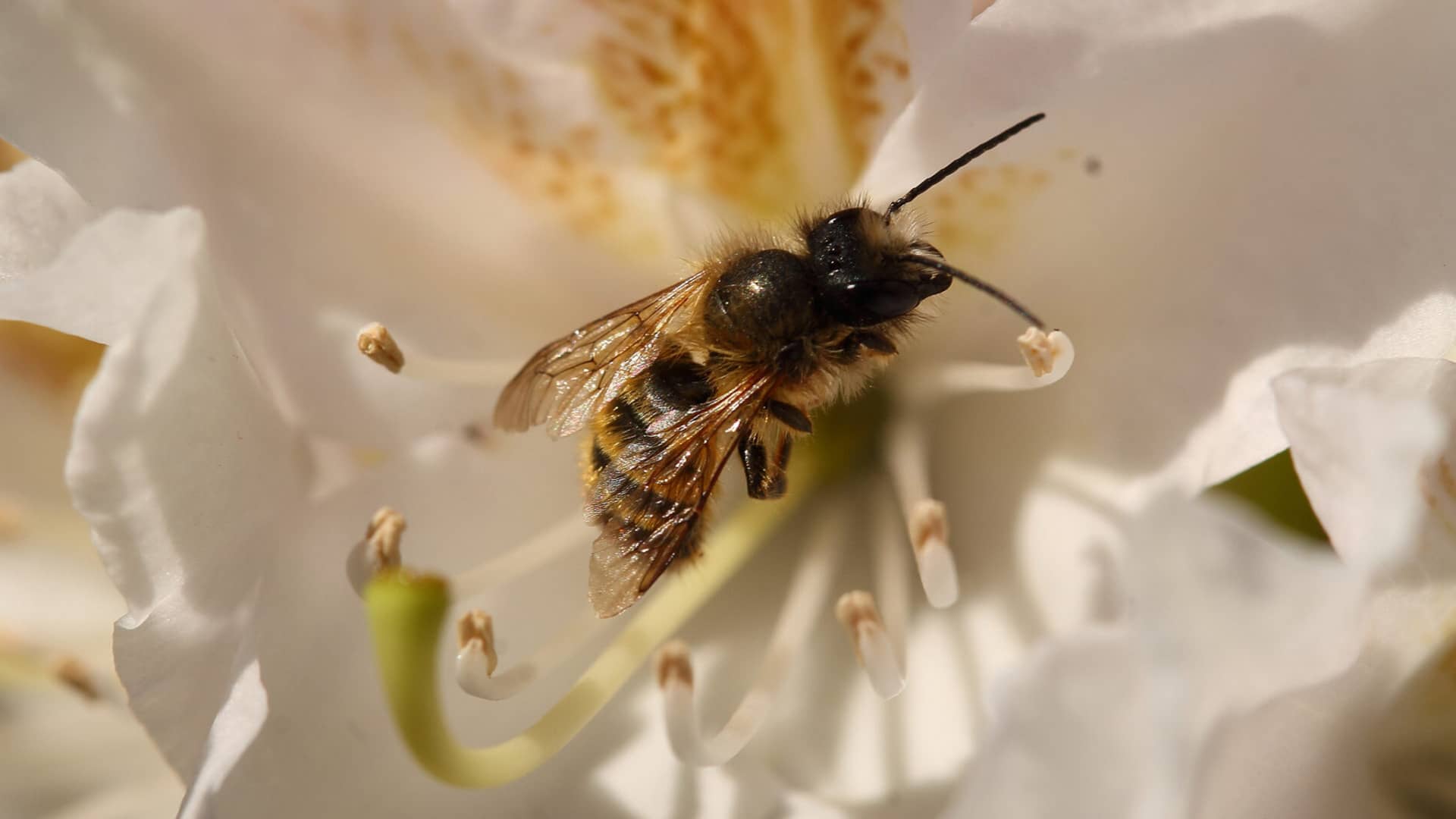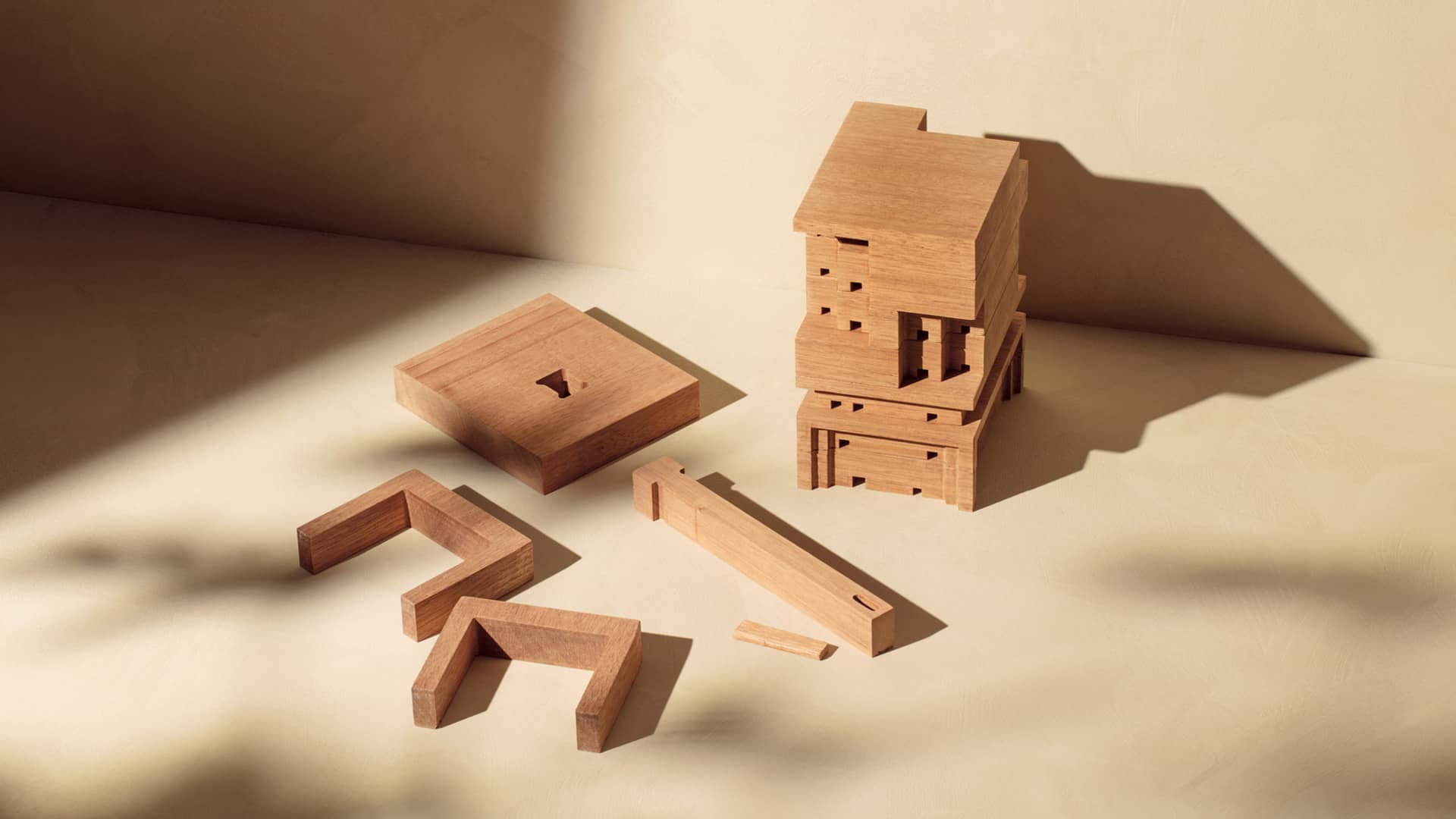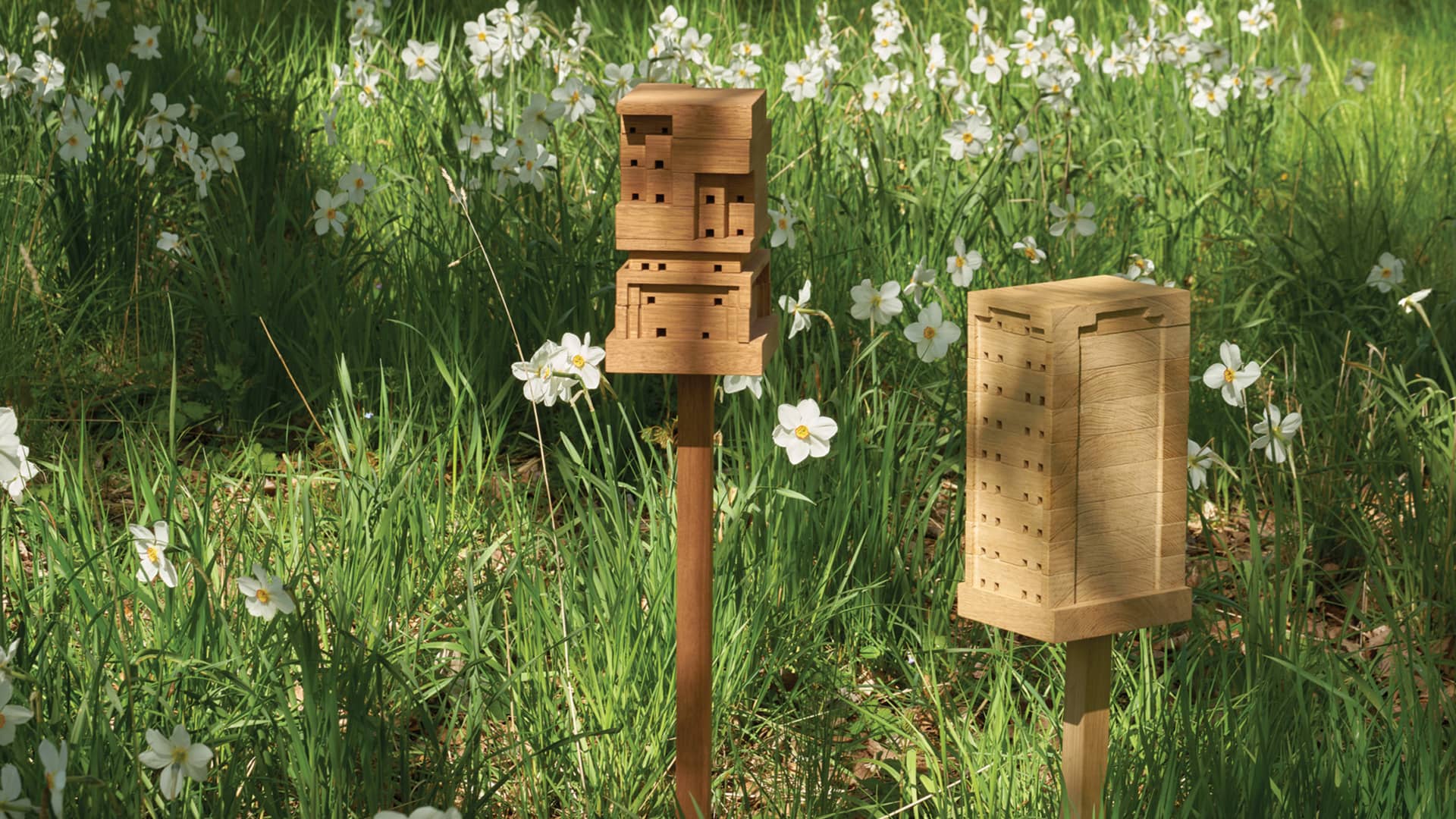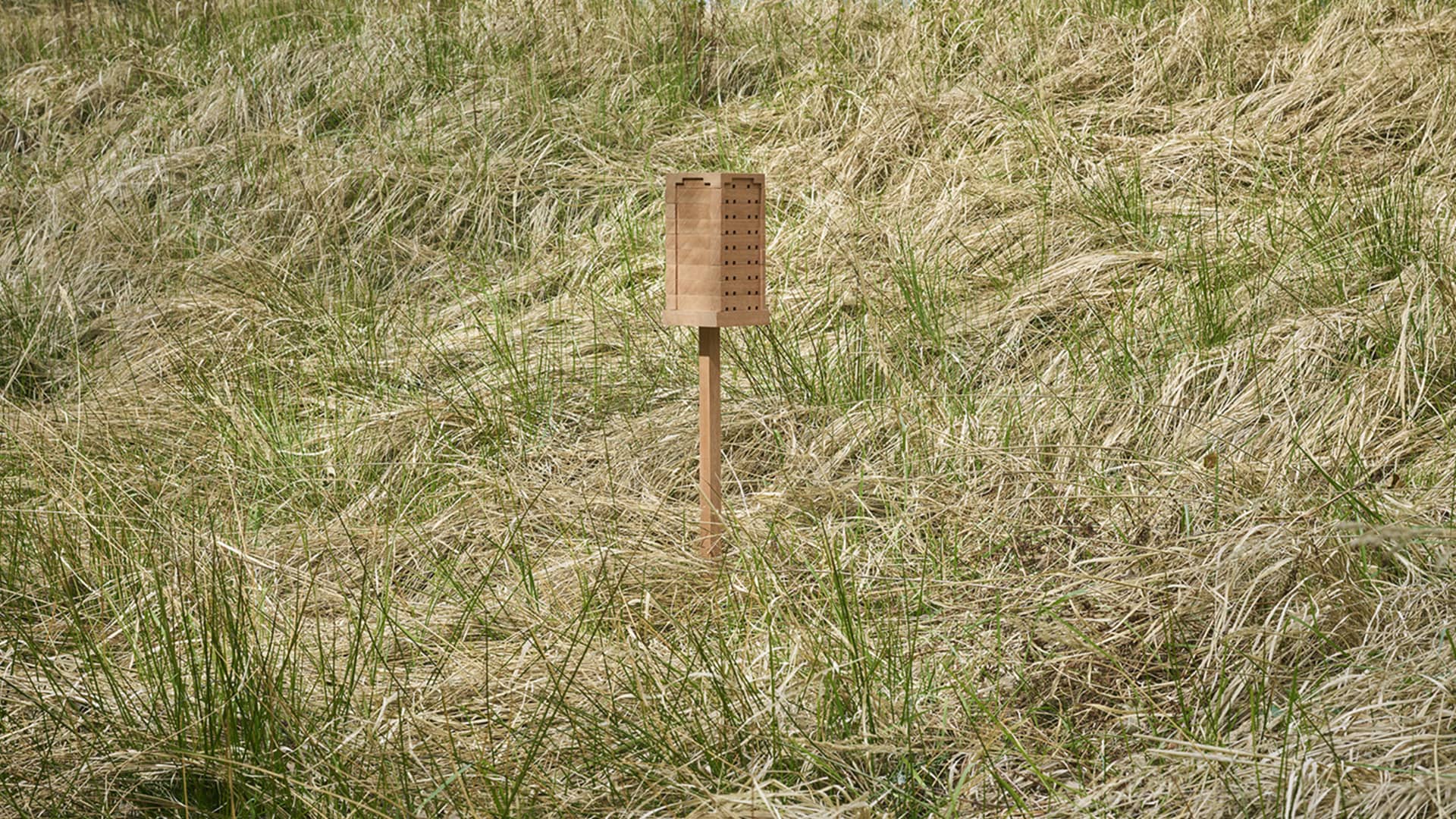Bee Home: An Open Source Design for Our Planet
In collaboration with designer Tanita Klein and our friends from Bakken & Bæck, we have launched Bee Home — a free and open-source design that enables anyone, anywhere, to support their local pollinators and take action in preserving the world’s biodiversity. “For almost 80 years, IKEA has enabled people to create a better everyday life at home. But our home is more than just four walls— our home is also the planet we live on. That is why we launch Bee Home: we want to enable people everywhere to help rebalance our relationship with the planet and ensure a sustainable home for all of us,” says Kaave Pour, Director SPACE10.
For people and the planet
Bees and the service they provide are essential to life on this planet. These animals are a vital part of our ecosystem and have been shaping our natural environment for millions of years. But now, because of human impact, their place in this world is threatened.
Bee Home explores how we can inspire people to solve this global challenge in a playful and accessible way. Through a digital platform that allows anyone to design, customise and download their own Bee Home, we hope to offer a vision of how democratic design can help rebalance our relationship with the planet.
The importance of pollination
Bees are essential for life on our planet. According to the Food and Agriculture Organisation of the United Nations (FAO), nearly 90 per cent of all flowering plant species in the world depend on animal pollinators — this includes roughly one third of the world’s food supply. Pollinators enable a biodiverse ecosystem, meaning that they have quite literally shaped the world around us. Without the service bees provide, our lives and our world would look very different. Now, due to human impact, bees are in danger of going extinct. We’ve unwittingly destroyed their homes and natural habitats when building our own houses, cities and landscaping our gardens. The routine use of pesticides, chemicals and the advent of monoculture in farming has resulted in the depletion of wildflower meadows and the disappearance of spaces that native bees once called home.
In order to re-establish a balance between people and the planet, we need to start restoring our natural surroundings. Giving the bees back their homes can be a start.
Why solitary bees
Bee Home is designed to house solitary bees — the most prolific pollinator you’ve probably never heard of. There are around 20,000-30,000 bee species in the world. While the most recognised and talked about is the western honeybee, the vast majority of bee species are solitary. Unlike honeybees, solitary bees do not live in hives or produce honey. Instead, they mostly live alone and spend their days gathering pollen and collecting food for their next generation of offspring. Solitary bees are phenomenal pollinators. A single solitary bee can provide as much pollination as 120 honeybees. While the commercially bred honeybee is often shipped across countries to pollinate farming crops, wild bees have uniquely co-evolved and adapted to the flowering plants in their local context and habitat. This means that when it comes to pollination, they are designed to do this job in a way no other animal can.
Interestingly, every female solitary bee is a queen and can have anywhere between 20-30 offspring. In light of this, one single Bee Home could give life to hundreds of solitary bees, offering a link in the chain that can contribute to the survival of flowers, trees, animals and our ecosystems as a whole.
Behind the design
With the physical design of the Bee Home, we committed ourselves to an extensive research process paired with a phase of rapid prototyping, ensuring that we iterated and improved upon ideas quickly, fluidly, and with the best end result in sight. First, we focused on the needs of the bees. Most solitary bees live in holes burrowed into either trees or into the ground. Bee Home is designed with these natural inclinations in mind, made with holes for each bee to store food and provide shelter for the eggs they lay. Everything — from the elimination of glue and other toxic adhesives, down to the specific dimensions of each hole where the bees will lay their eggs — has been designed to optimise how at home they will feel within the design.
Second, we made local fabrication and sustainability the main metrics of success for the design. Bee Home is designed with local hardwoods in mind — whether it be untreated oak, larch or mahogany — so each design’s fabrication can be as locally sourced as possible. The entire design can be assembled without any nails or additional materials, so it is easy to recycle without compromising the circular design principles from which it was made. Third, we made the project parametrically customisable so everyone, everywhere, can be involved with the design and realisation of their own Bee Home. Each of the sixteen storeys of Bee Home is designed differently. The modular design allows you to shuffle and randomise the order of storeys, arranging them in any number of combinations you find most pleasing. While the design is streamlined through certain ‘aesthetic parameters’, the Bee Home you choose to design will be uniquely your own.
Lastly, we have made the design as accessible as possible. Not only are the design files available and free for download, but the assembly of the Bee Home doesn’t require tools of any kind. Inspired by Japanese wood joinery and a few tricks in carpentry, the multiple storeys of the Bee Home are actually locked together through a ‘spine and key’ system that maintains the home’s structural integrity while making it incredibly easy to assemble and dismantle.
A new era of design and fabrication
At SPACE10, we are interested in the exciting new opportunities that arise when automation, data exchange and digital fabrication combine to democratise design and production practices. When ordinary people can be a part of the process, designing for many people inevitably shifts to designing with many people. We work to identify the many opportunities that exist within this transition.
Bee Home is a free and open-source design that aims to pioneer a new era of democratic design for SPACE10.
This project takes advantage of the newest developments in digital fabrication and parametric design and introduces entirely new distribution methods to enable a fully democratic design process — where everyone, everywhere, is empowered to be part of designing, customising and fabricating their very own Bee Home locally.
How it works – easy as 1, 2, 3.
Step 1: Design.
Visit bee home design and design your own Bee Home based on predefined parameters. This means you not only select the size, height and visual expression, but also define if you want to place your Bee Home on a rooftop, a backyard or on a balcony. This makes the design process fun, intuitive and easy enough that it can be done in a matter of minutes.
Step 2: Fabricate.
When satisfied with your design, you can download the design files instantly and for free, which you then forward to your local maker space and have them make it locally and on-demand. On http://beehome.design/ you can find a list of makerspaces in your local area.
Step 3: Place.
The final step is to place your Bee Home, plant some flowers and let nature do the rest. Solitary bees make this part especially easy — they don’t overstay their welcome, as they live just four to six weeks, and they are friendly and can easily coexist with children and pets. No maintenance is required besides a quick cleaning every third year. In fact, once you put it up, you should just leave it be.
And that’s all you need to know to start designing your very own Bee Home today!
Bee Home is an open invitation for everyone to give bees the space they need — and to make sure the planet we all call home thrives in the process.
Credits
Bakken & Bæck is a technology-driven design studio that helps ambitious companies identify, explore and respond to new opportunities by building digital solutions that stand the test of time. BB was named one of the World’s Most Innovative Companies in 2020 by Fast Company and recognised for making complex industries accessible to everyday users. Working as one tight-knit team across their offices in Oslo, Amsterdam, Bonn and London, their work aims to have an impact on a global scale.
Tanita Klein is an interior and product designer from Germany. After studying in Paris and Eindhoven, Tanita Klein joined SPACE10 as a designer-in-residence, where she co-created the physical design of Bee Home. Tanita’s work aims to rethink existing contexts while creating solutions inspired by current socio- and environmental shifts happening in the world. Her favourite design tool is systemic thinking and modularity on a playful level. Tanita now lives and works in Copenhagen.
In collaboration with designer Tanita Klein and our friends from Bakken & Bæck, we have launched Bee Home — a free and open-source design that enables anyone, anywhere, to support their local pollinators and take action in preserving the world’s biodiversity. “For almost 80 years, IKEA has enabled people to create a better everyday life at home. But our home is more than just four walls— our home is also the planet we live on. That is why we launch Bee Home: we want to enable people everywhere to help rebalance our relationship with the planet and ensure a sustainable home for all of us,” says Kaave Pour, Director SPACE10.
For people and the planet
Bees and the service they provide are essential to life on this planet. These animals are a vital part of our ecosystem and have been shaping our natural environment for millions of years. But now, because of human impact, their place in this world is threatened.
Bee Home explores how we can inspire people to solve this global challenge in a playful and accessible way. Through a digital platform that allows anyone to design, customise and download their own Bee Home, we hope to offer a vision of how democratic design can help rebalance our relationship with the planet.
The importance of pollination
Bees are essential for life on our planet. According to the Food and Agriculture Organisation of the United Nations (FAO), nearly 90 per cent of all flowering plant species in the world depend on animal pollinators — this includes roughly one third of the world’s food supply. Pollinators enable a biodiverse ecosystem, meaning that they have quite literally shaped the world around us. Without the service bees provide, our lives and our world would look very different. Now, due to human impact, bees are in danger of going extinct. We’ve unwittingly destroyed their homes and natural habitats when building our own houses, cities and landscaping our gardens. The routine use of pesticides, chemicals and the advent of monoculture in farming has resulted in the depletion of wildflower meadows and the disappearance of spaces that native bees once called home.
In order to re-establish a balance between people and the planet, we need to start restoring our natural surroundings. Giving the bees back their homes can be a start.
Why solitary bees
Bee Home is designed to house solitary bees — the most prolific pollinator you’ve probably never heard of. There are around 20,000-30,000 bee species in the world. While the most recognised and talked about is the western honeybee, the vast majority of bee species are solitary. Unlike honeybees, solitary bees do not live in hives or produce honey. Instead, they mostly live alone and spend their days gathering pollen and collecting food for their next generation of offspring. Solitary bees are phenomenal pollinators. A single solitary bee can provide as much pollination as 120 honeybees. While the commercially bred honeybee is often shipped across countries to pollinate farming crops, wild bees have uniquely co-evolved and adapted to the flowering plants in their local context and habitat. This means that when it comes to pollination, they are designed to do this job in a way no other animal can.
Interestingly, every female solitary bee is a queen and can have anywhere between 20-30 offspring. In light of this, one single Bee Home could give life to hundreds of solitary bees, offering a link in the chain that can contribute to the survival of flowers, trees, animals and our ecosystems as a whole.
Behind the design
With the physical design of the Bee Home, we committed ourselves to an extensive research process paired with a phase of rapid prototyping, ensuring that we iterated and improved upon ideas quickly, fluidly, and with the best end result in sight. First, we focused on the needs of the bees. Most solitary bees live in holes burrowed into either trees or into the ground. Bee Home is designed with these natural inclinations in mind, made with holes for each bee to store food and provide shelter for the eggs they lay. Everything — from the elimination of glue and other toxic adhesives, down to the specific dimensions of each hole where the bees will lay their eggs — has been designed to optimise how at home they will feel within the design.
Second, we made local fabrication and sustainability the main metrics of success for the design. Bee Home is designed with local hardwoods in mind — whether it be untreated oak, larch or mahogany — so each design’s fabrication can be as locally sourced as possible. The entire design can be assembled without any nails or additional materials, so it is easy to recycle without compromising the circular design principles from which it was made. Third, we made the project parametrically customisable so everyone, everywhere, can be involved with the design and realisation of their own Bee Home. Each of the sixteen storeys of Bee Home is designed differently. The modular design allows you to shuffle and randomise the order of storeys, arranging them in any number of combinations you find most pleasing. While the design is streamlined through certain ‘aesthetic parameters’, the Bee Home you choose to design will be uniquely your own.
Lastly, we have made the design as accessible as possible. Not only are the design files available and free for download, but the assembly of the Bee Home doesn’t require tools of any kind. Inspired by Japanese wood joinery and a few tricks in carpentry, the multiple storeys of the Bee Home are actually locked together through a ‘spine and key’ system that maintains the home’s structural integrity while making it incredibly easy to assemble and dismantle.
A new era of design and fabrication
At SPACE10, we are interested in the exciting new opportunities that arise when automation, data exchange and digital fabrication combine to democratise design and production practices. When ordinary people can be a part of the process, designing for many people inevitably shifts to designing with many people. We work to identify the many opportunities that exist within this transition.
Bee Home is a free and open-source design that aims to pioneer a new era of democratic design for SPACE10.
This project takes advantage of the newest developments in digital fabrication and parametric design and introduces entirely new distribution methods to enable a fully democratic design process — where everyone, everywhere, is empowered to be part of designing, customising and fabricating their very own Bee Home locally.
How it works – easy as 1, 2, 3.
Step 1: Design.
Visit bee home design and design your own Bee Home based on predefined parameters. This means you not only select the size, height and visual expression, but also define if you want to place your Bee Home on a rooftop, a backyard or on a balcony. This makes the design process fun, intuitive and easy enough that it can be done in a matter of minutes.
Step 2: Fabricate.
When satisfied with your design, you can download the design files instantly and for free, which you then forward to your local maker space and have them make it locally and on-demand. On http://beehome.design/ you can find a list of makerspaces in your local area.
Step 3: Place.
The final step is to place your Bee Home, plant some flowers and let nature do the rest. Solitary bees make this part especially easy — they don’t overstay their welcome, as they live just four to six weeks, and they are friendly and can easily coexist with children and pets. No maintenance is required besides a quick cleaning every third year. In fact, once you put it up, you should just leave it be.
And that’s all you need to know to start designing your very own Bee Home today!
Bee Home is an open invitation for everyone to give bees the space they need — and to make sure the planet we all call home thrives in the process.
Credits
Bakken & Bæck is a technology-driven design studio that helps ambitious companies identify, explore and respond to new opportunities by building digital solutions that stand the test of time. BB was named one of the World’s Most Innovative Companies in 2020 by Fast Company and recognised for making complex industries accessible to everyday users. Working as one tight-knit team across their offices in Oslo, Amsterdam, Bonn and London, their work aims to have an impact on a global scale.
Tanita Klein is an interior and product designer from Germany. After studying in Paris and Eindhoven, Tanita Klein joined SPACE10 as a designer-in-residence, where she co-created the physical design of Bee Home. Tanita’s work aims to rethink existing contexts while creating solutions inspired by current socio- and environmental shifts happening in the world. Her favourite design tool is systemic thinking and modularity on a playful level. Tanita now lives and works in Copenhagen.







 Sign in with email
Sign in with email



